Photo
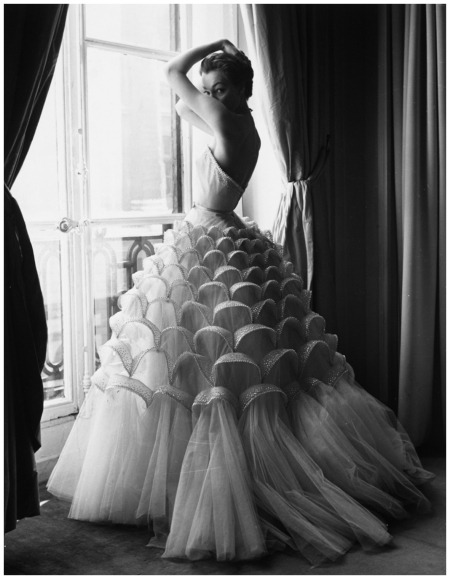
Ivy Nicholson in evening gown by Jacques Griffe,Paris, 1953
Photo Regina Relang
300 notes
·
View notes
Photo
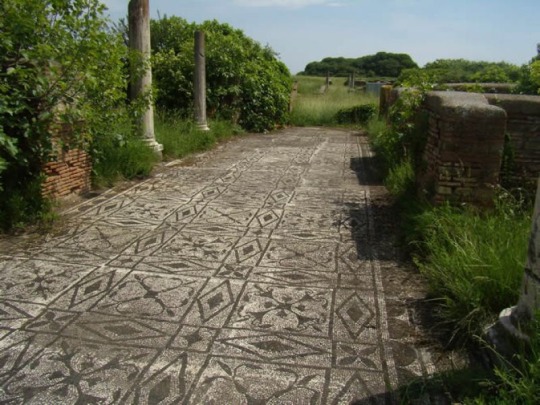
shiningjasmin
Mosaic floor of the Imperial Palace, Ostia Antica, Rome, Italy.
162 AD.
482 notes
·
View notes
Photo
One of my favorite depictions of Dionysus.
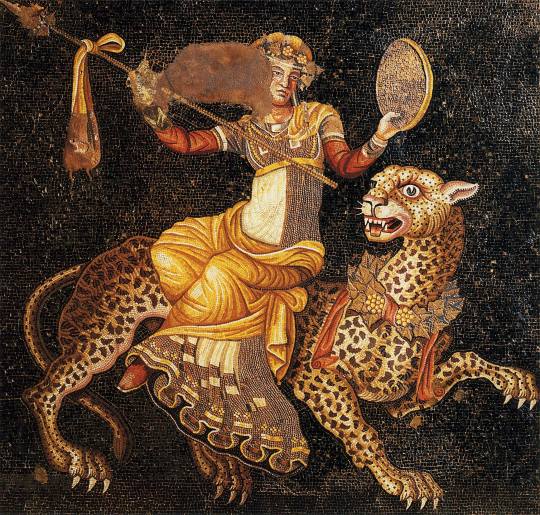
Dionysos riding on a panther, floor mosaic, House of the Masks, Delos (120-80 BC)
4K notes
·
View notes
Photo
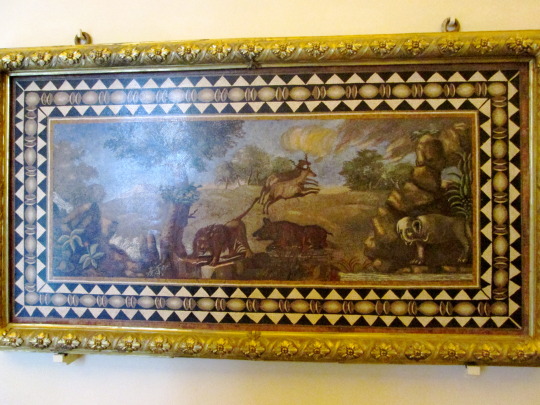
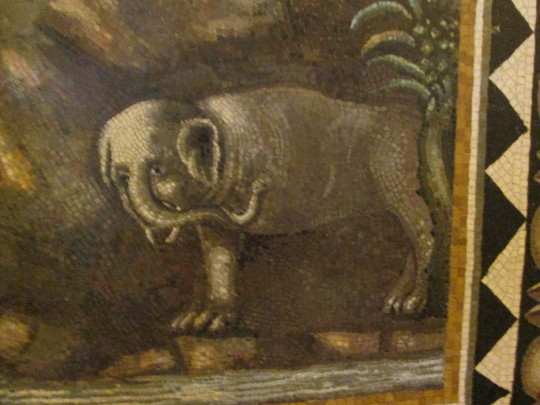

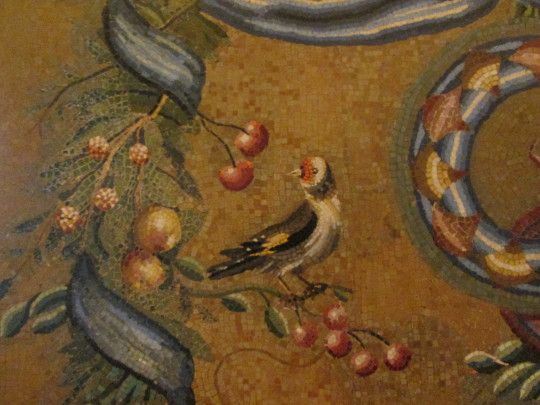
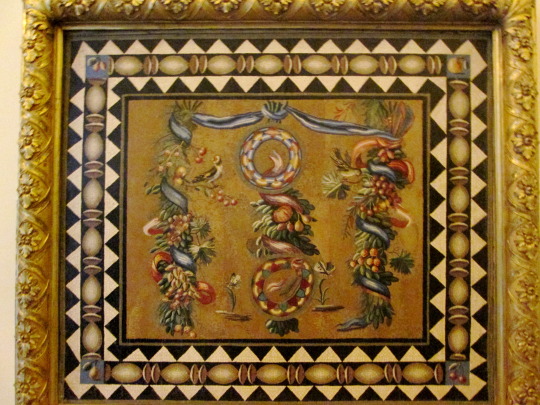
These mosaics are recent additions to the Musei Vaticani, previously housed in the Profane Museum of Clement VIII and belong to the Furietti collection. Cardinal Giuseppe Alessandro Furietti was an antiquarian in the 18th century responsible for excavations at Hadrian's Villa and also the owner of the famous mosaic Pliny's doves - attributed to Sosus of Pergamon and mentioned by Pliny the Elder in his Natural History, and which he excavated at Tivoli. Before his death, he sold many of his possessions to the Museo Clementino.
Photos taken by me on 11 December 2014.
4 notes
·
View notes
Photo
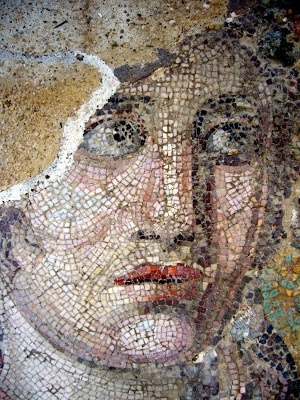
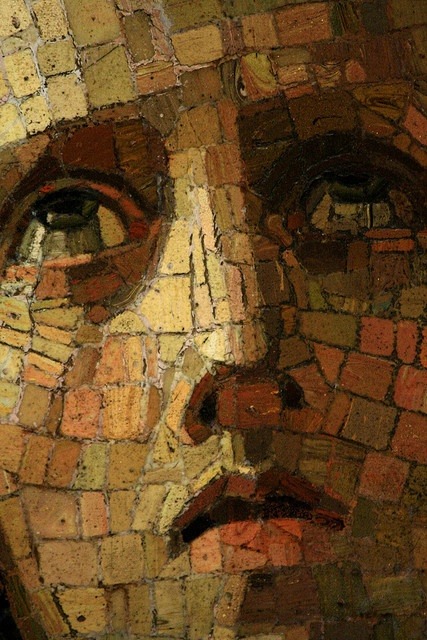
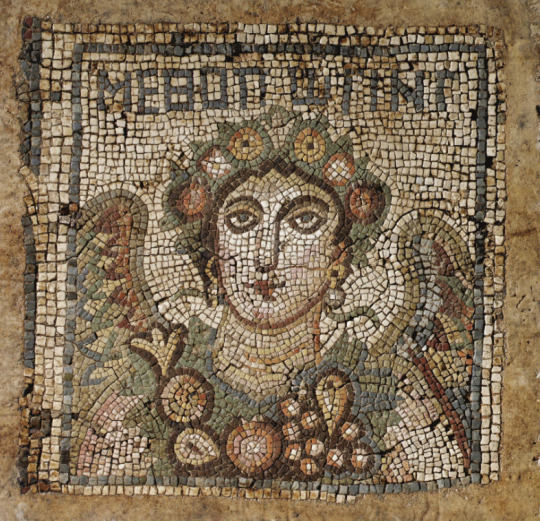
Mosaic faces. Top: Face of Dionysus, Delos, Cyclades, Greece. Middle: Saint in grief. St. Issac’s Cathedral. St. Petersburg, Russia. Bottom: Syria, 4.-5th century AD. and more in my latest blog post: www.helenmilesmosaics.org
65 notes
·
View notes
Photo
This mosaic appears to have the attributes of Dionysus, which is interesting when you consider that this is a portrait of a woman. In bacchic rituals, everything is turned upside down as far as gender roles. In The Bacchae, the play by Euripides, not only are the maenads female hunters, but he even goes so far as to dress Pentheus as a woman in order to sneak into the woods and observe the women during their rituals. The women dress themselves with wreathes that have snakes woven in, which is how Dionysus himself is frequently portrayed in Greek pottery.

Roman Mosaic
Bust of woman with a wreath of flowers around her head and a floral garland over her left shoulder. Roman artwork of the Imperial era.
circa: 2nd century CE
(source)
556 notes
·
View notes
Photo
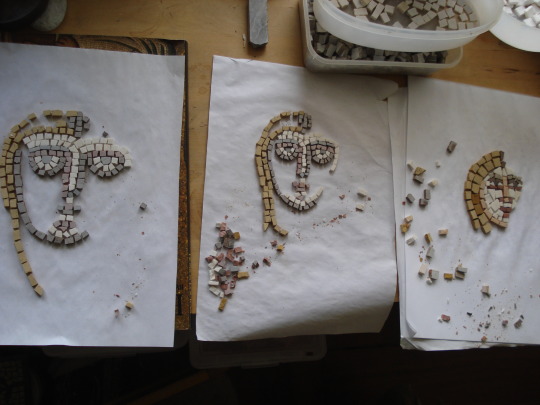
'Sketches' of mosaic faces to check sizing and spacing for a new work. No point in doing a design if you have to use tesserae the size of a pin head to render it.
9 notes
·
View notes
Photo
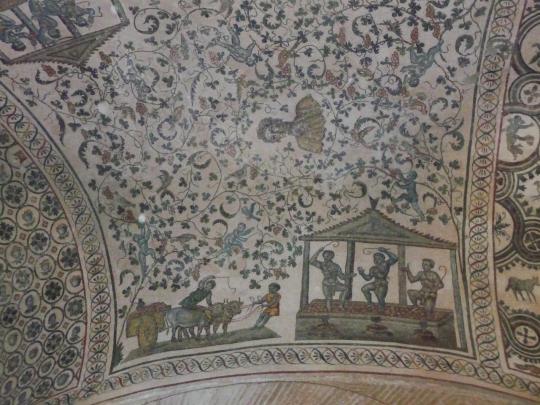
Mausoleum of Santa Coszanza (Rome)
* 4th century CE
July 2012
33 notes
·
View notes
Link
Awesome!
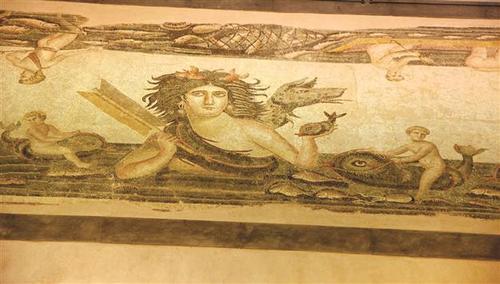
The Archaeological Museum in Hatay, one of Turkey’s most religiously diverse provinces, will soon boast the world’s largest mosaic collection, following restorations to the building.
“This is a special museum in terms of such features. Half of the museum is currently open. Nearly 400 square...
150 notes
·
View notes
Photo
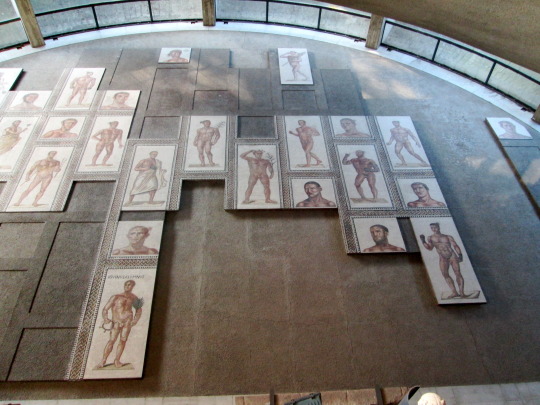
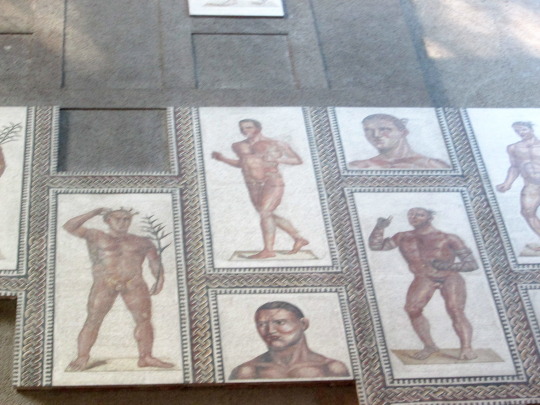
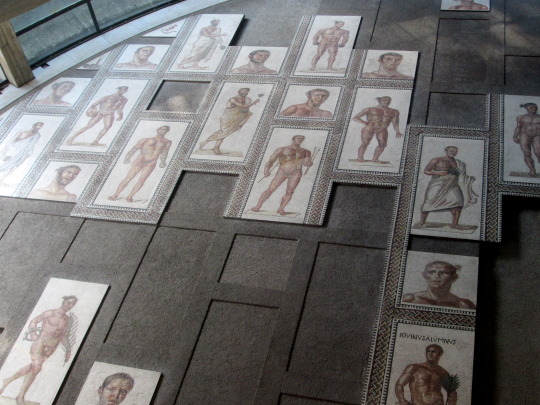

Pavement mosaics from the Baths of Caracalla (built around 212 CE) that are housed at the Vatican Museums. The mosaics depict athletes and are useful in understanding the desired athletic look of the time. We know from the kouroi statues found throuhgout Greece that each of the city-states had different ideas about what was considered the perfect and most beautiful athletic figure for a male. These mosaics function similarly because the bath complex was also a place for athletes to work out, which means that the mosaics were meant to inspire athletes, much like the photographs of healthy adults in a modern gym. A similar stocky body, like that of a wrestler, can be seen in the Farnese Hercules, a massive statue that also decorate the baths.
All photos by me, Vatican museum photos taken 11 Dec 2014 and Hercules at the Naples Archeological Museum 1 Nov 2014.
17 notes
·
View notes
Photo

Detail from a Roman mosaic, late third or early fourth century BCE
room 37 in the villa at Piazza Armerina in Sicily
Children combat small animals in humorous imitation of the venatorial displays in the Roman arena. This poor hare gets a dramatic death scene, at least.
In the register below this scene, the small animals turn the tables on their would-be hunters, attacking and savaging them in turn. (x)
168 notes
·
View notes
Photo
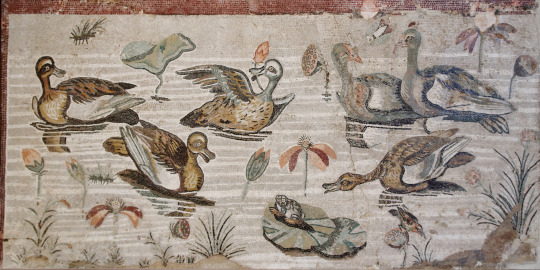
Roman mosaic from the House of the Faun, Pompeii.
Naples National Archaeological Museum
Source - Marie-Lan Nguyen via Wikimedia.
147 notes
·
View notes
Photo

Mosaic
Carthage
c. 5th-6th Century
Mosaic pavement; stone; one of seven sections of a large pavement, whose hunting scenes formed the principal motif of a mosaic; bear; above is a shrub, tree to right; below bear is a shrub; in buff, khaki, brown, black, red, green, yellow, blue and grey.
Source: British Museum
323 notes
·
View notes
Text
Back in the States...whoa
Hey everyone! I've been out of the loop for about a week, but that's because I've just returned to the US and I've been juggling reverse culture shock, seeing ALL the friends and family, telling ALL the stories, and wrapping ALL the gifts for the holiday celebrations. I'll get a few posts in just before the holidays, but then I'll be off the radar for a bit - my grandparents still haven't figured out the concept of WiFi, and I'll be there for a few days.
Also, welcome to all the new followers! I hope you enjoy what my little blog has to offer. :)
Happy holidays!

0 notes
Photo
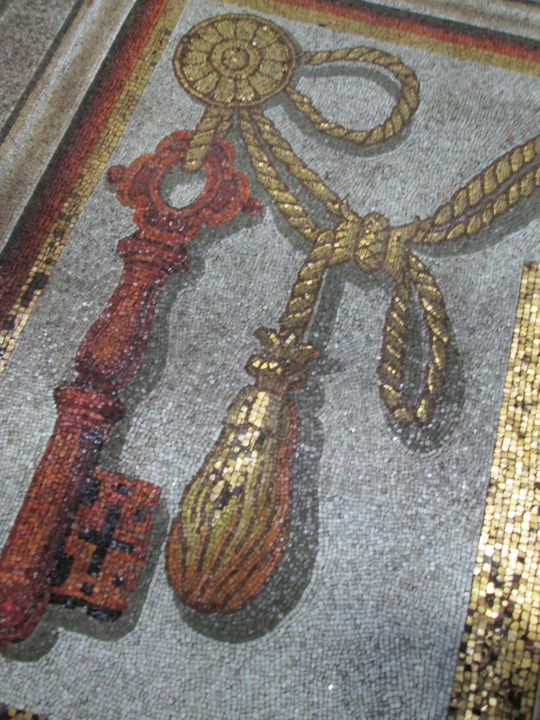

Details of the mosaics in the upper part of the cupola at St. Peter's Basilica, Vatican City. The emblemas are made with smalti and the borders are made with stone. The Cupola was designed by Michelangelo Buonarotti and construction was finished in 1564. These side angels were designed by Cesare Roncalli. The key is a symbol of the keys to heaven which is referred to in the quote which encircles the tympana: "TU ES PETRUS ET SUPER HANC PETRAM AEDIFICABO ECCLESIAM MEAM - TIBI DABO CLAVES REGNI CAELOREM" You are Peter and upon this stone I will build by Church - I will give to you the keys of the Kingdom of Heaven.
I took these photos Dec. 5, 2014.
#basilica di san pietro#cupola#michelangelo#vatican city#smalti#mosaics#Cesare Roncalli#keys to heaven
6 notes
·
View notes
Photo





Lantern mosaics at St. Peter's Basilica in the Vatican City. These are zoomed in, because they are incredibly high up - definitely made as a decoration pleasing for God, in the tradition of the Greeks and Romans before the Church. Gian Lorenzo Bernini was chosen to organize the interior décor of the basilica in the 17th century after it was finally completed, using Michelangelo Buonarotti's design in 1590. Construction of the basilica, after it was demolished in the late 1400's began in 1506 with the architect Donato Bramante. Over the next century, the plan would alternate as one architect died and the next took over. The first design was on a Greek cross, but then after Bramante died and Raphael took over in 1514, the College of Cardinals had decreed that the new space sit on top of the previous basilica built by Constantine's foundations, as it was considered sacred ground. Raphael died a mere 6 years later in 1520 and was replaced by Antonio da Sangallo the Younger, who retained the Latin cross design but had an elaborate gothic dome with two exterior clock towers. He was interrupted in 1527 by Emperor Charles V's invasion and sack of Rome. In 1537, when the papacy returned to Rome, he resumed work until his death in 1546, having only accomplished a few piers to support the massive dome. This is when Michelangelo took over and returned to the Greek cross, which has been the design that the later architects that took over for him stuck to. However, Carlo Moderno was called upon to extend the nave (making the overall plan a composite of the Latin and Greek crosses), create a façade to link the basilica to the Sistine Chapel and the other buildings of the Vatican. Bernini was also responsible for the design of the piazza and colonnades that make the overall appearance of the plan similar to a keyhole.
I took these photos November 4, 2014.
#St. Peter's Basilica#Basilica di San Pietro#Vatican City#Architecture#Bernini#Michelangelo#Raphael#Mosaic
0 notes
